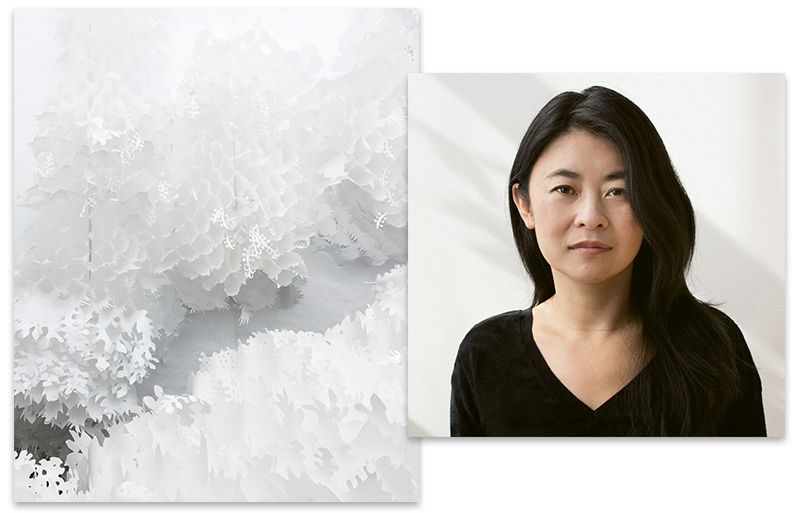How her interactive paper gardens will investigate the concept of utopia

(Left) How Her Garden Grows - She’s helped design the Beijing Olympics opening ceremony and has shown her work around the world; now artist Jennifer Wen Ma brings her paper forest to the Halsey with Cry Joy Park—Gardens of Dark and Light; (Right) Jennifer Wen Ma.
Within any garden there are dualities at play. Day balances night. Winter’s decay leads to spring’s fertility. And blooms above ground mirror a dark labyrinth of roots beneath. In Charleston’s case, roots thread through layers of Antebellum and Colonial soil, past shards of discarded Chinese porcelain and metal slave tags. Light and darkness, utopia and dystopia, yin and yang: this eternal dance of opposites intrigues artist Jennifer Wen Ma, who debuts her installation Cry Joy Park: Gardens of Dark and Light at the Halsey Institute of Contemporary Art at the College of Charleston on May 17th.
You might remember Ma’s work from the opening ceremony of the 2008 Olympics if you were among the billions of viewers watching a massive scroll unfurl on Beijing’s Olympic Green, revealing dancers tracing patterns in Chinese ink (she was one of seven members of the core creative team, and received an Emmy Award for her role). Seven years later, Ma premiered her installation opera Paradise Interrupted here in Charleston, fabricating a dream garden that quite literally “grew” onstage as the opera unfolded. The performance inspired Ma to conceive Cry Joy Park which has become a worldwide tour customized to specific cities.

Ma’s team installs a version of Cry Joy Park at Beijing’s Tang Contemporary in October 2018.
At Piccolo Spoleto’s Halsey exhibit, Ma and her team have labored to rig hidden robotic systems to trigger garden elements to interact with visitors. Some foliage retreats as you approach it (like a mimosa leaf in nature, furling upon touch) or extends itself (like a tendril of climbing wisteria). A portal or vortex connects one garden space to another, requiring guests to push through it—a sort of birthing transition from darkness to light. And to add even more layers of experience to the exhibit, students from the College of Charleston will perform original work—drumming, dancing, reciting poetry, singing, and storytelling—that curator Bryan Granger hopes “will further activate the space.”
If there’s one thing to emphasize about this installation, it is inclusion. A series of on-site feasts will feature key members of the community. Ma has worked closely with local activist Jessica Boylston, the leader of Ideas Into Action, to plan the dinner series and shape the guest list. Themes will address topics such as food security, land politics, and education. “I hope we can get conversations going,” says Ma. “I’m hoping this will help Charlestonians come together and discuss important and complex issues, and perhaps see their own city in a new light.”
Photographs (2) couresty of The Halsey Institute of Contemporary Art